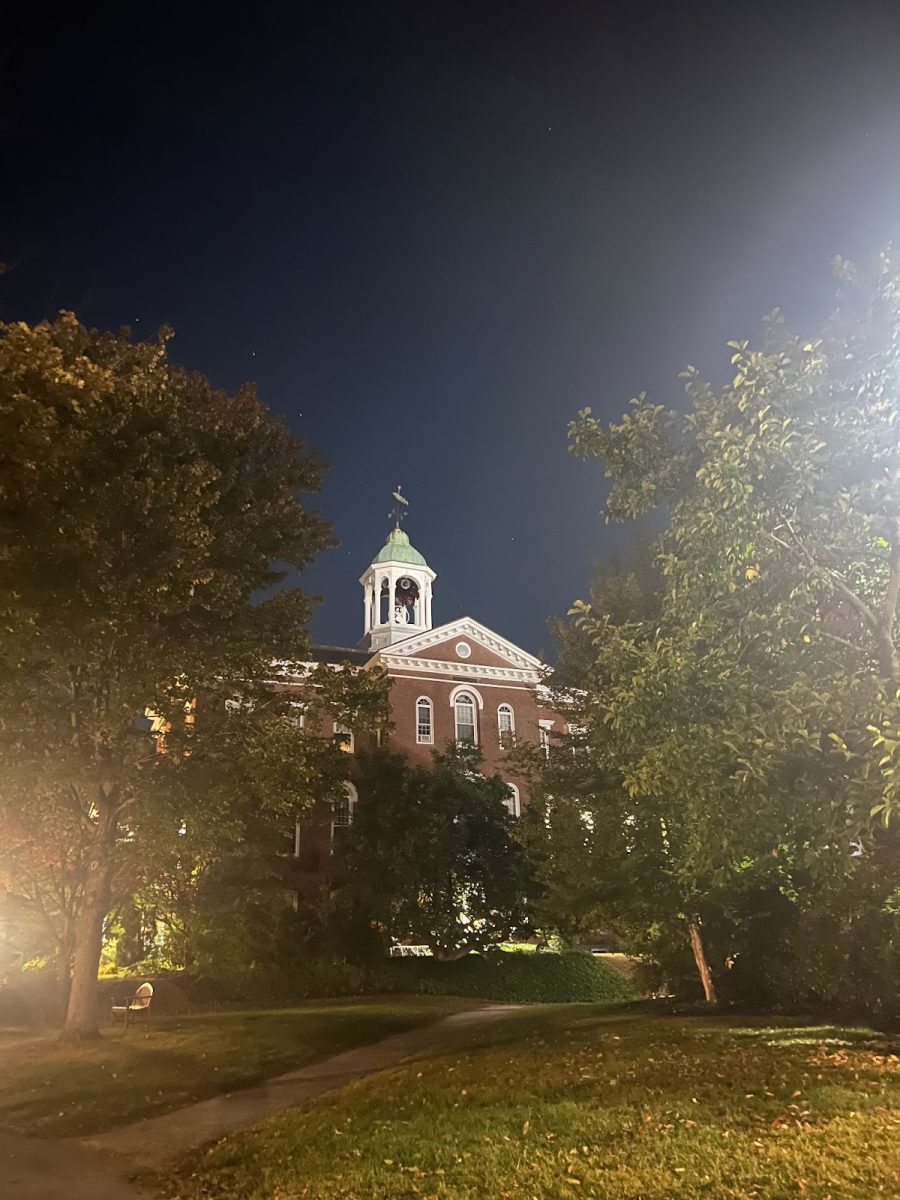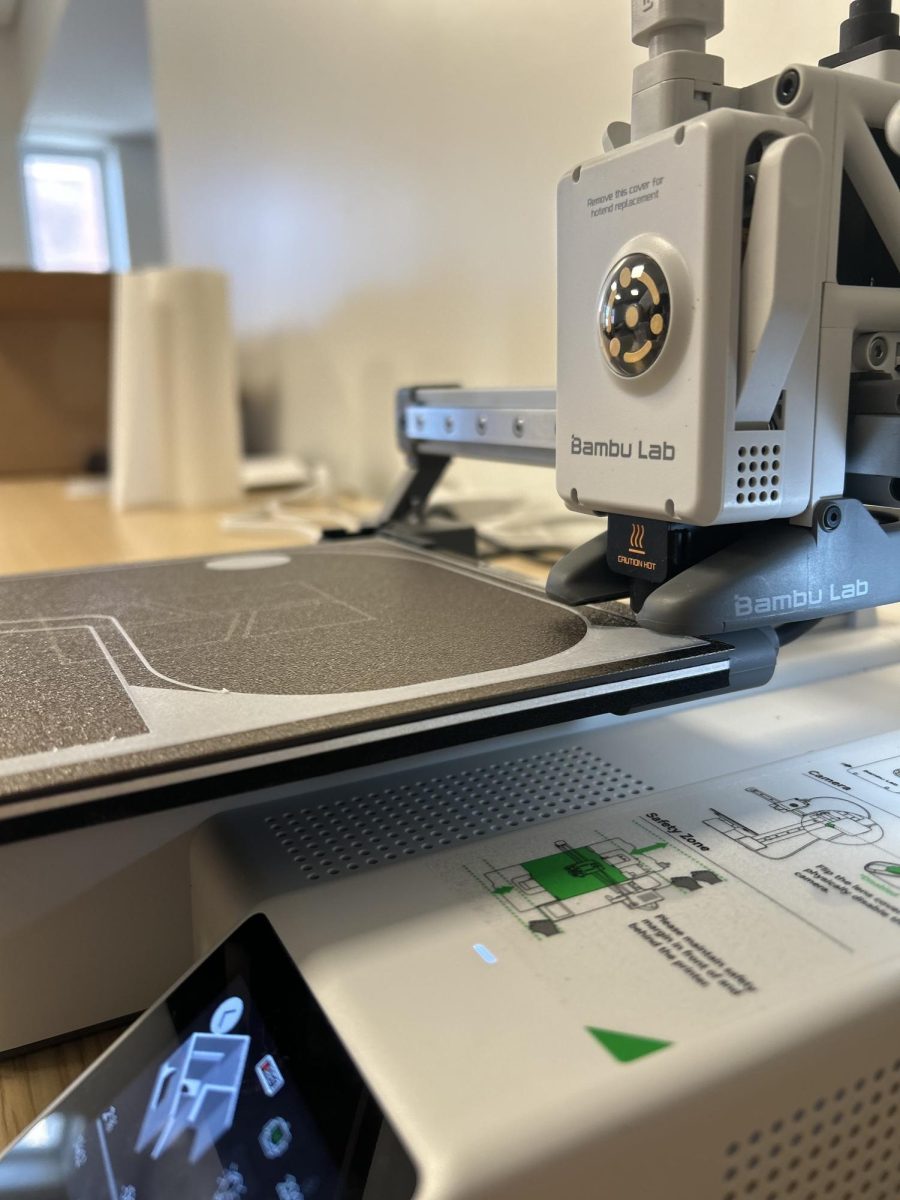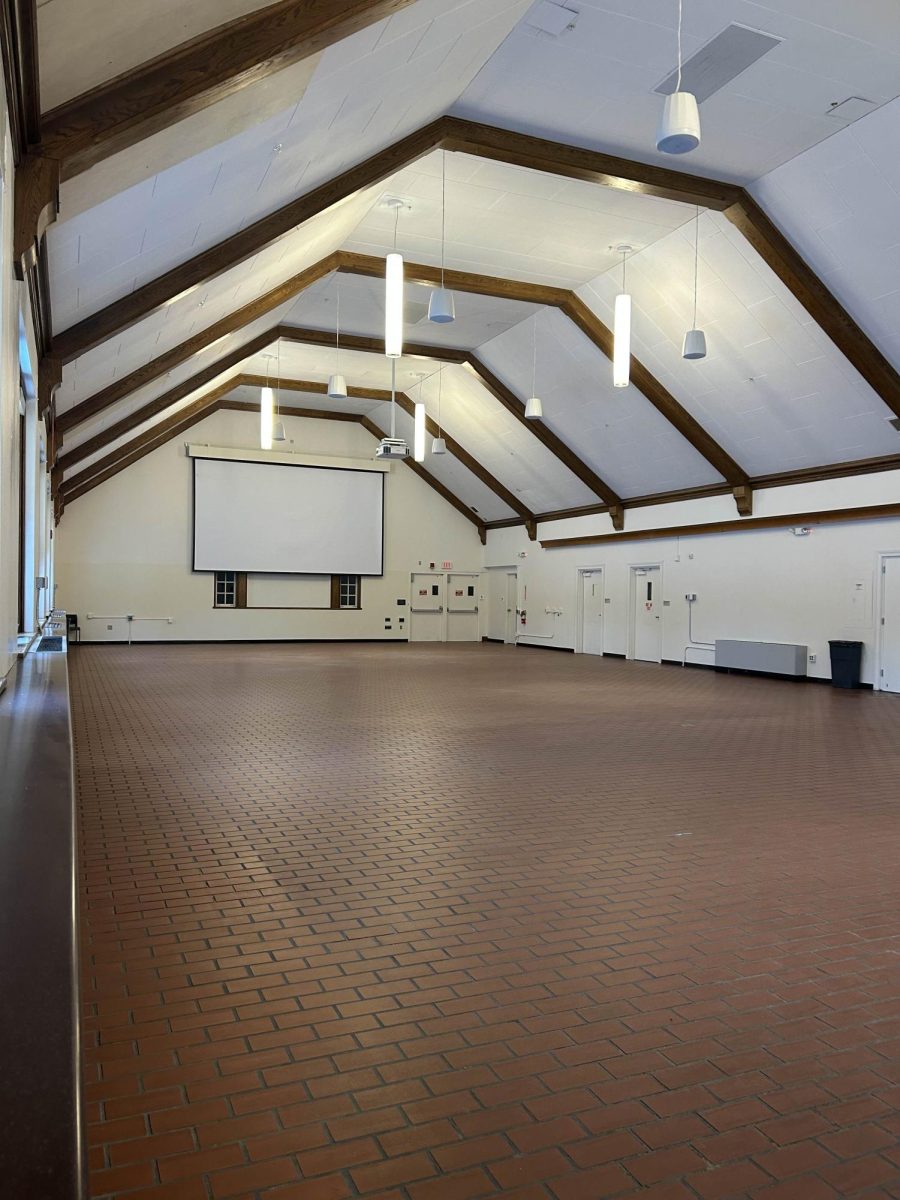On Friday and Saturday, Jan. 11 and 12, Sandglass Theater from Putney, Vermont, came to Bates’ Gannet Theater to perform the company’s original play, “Babylon, Journeys of Refugees,” featuring recent Bates grad Keila K. Ching ’18 as an ensemble member.
The play started with a pop quiz, in which actors prompted questions and after a pause, would step forward if the answer applied to them. Some questions included: “Which of us have family in another country?” and “Which of us have been arrested?” to which one or a few actors stepped forward. For the final question “Who has been mistaken for another nationality?” all of the ensemble members stepped forward. It was later stated that this exercise was to differentiate who the actors were from the puppets they played.
From there, the stories of four refugees were told through multiple narrative forms, including song, music, sound effects, and crankies—or moving panoramas. Through the course of the play, the audience watched a mother escape from Afghanistan, a father and his daughter escape from Burundi, a boy from El Salvador escape from the gang violence around him, and a man with a master’s degree in computer science escape from Syria by boat. Present in each vignette, Gretel, the ghost from another war, slowly takes away prominent images from each story—from a sack of flour the woman from Afghanistan carried while escaping to a worn out pair of shoes the boy from El Salvador walked in on his way to the US border.
The story lines converge at the end of the play, when all the puppets are behind a chicken wire fence awaiting a decision on their appeals for refugee status in the US. While illustrating the experiences of refugees, the actors in the ensemble also asked questions about the US’s responsibility for accepting refugees, especially given the complication that the US is a major arms provider for war-torn countries like El Salvador. At the end of the play, the audience is left asking what happens to those refugees rejected from the US. Although Gretel the ghost is not given a story, we can assume she was rejected refugee status in the US after escaping Europe in World War II—signifying how history is known to repeat itself.
According the show’s playbill, Sandglass Theater decided to call the play “Babylon” after the ancient city of Babylon which is now in Iraq: “This fallen mythic civilization becomes, for us, a metaphor for the destruction and destabilization that is leading much of the world into a refugee crisis of mythic proportion.” It continues, stating that “In Babylon, the blending of actual testimony with unreal figures gives us a view into how we respond to the enormity of crisis.”
In response to a question during the Q&A session after the play about “Babylon’s” research and writing process, Shoshana Bass, one of the artistic co-directors and ensemble members of “Babylon,” shared the work that took place from the play’s conception to its final product. Through working closely with the Vermont Refugee Resettlement Program (now called USCRI Vermont), Sandglass Theater had the chance to interview staff members of the program—all of whom are resettled refugees—as well as their clients. According to Bass, “[W]e came in there with questions and what we needed to hear was what came out—and it was never necessarily [answers to] the questions we came in with.”
“With one exception, none of these stories we tell are somebody’s full rope for rope story,” explained Bass. “They are kind of amassed from different things. Through the interviews, we then kind of pulled up images that held to us the essence of this story and this situation, for example a pair of shoes that have been walked in for so long that they’ve fallen apart.”
A sentiment that all of the ensemble members wrestled with was representing a story that does not belong to them. As Eric Bass, the co-founder and director of Sandglass Theater, put it, “The fundamental issue in creating this piece is how you give voice, a voice that needs to be heard, when you cannot embody that voice, because it’s not you. It’s not just not you [as in] a different person, it’s not you [as in] a different culture. It’s not us. And so, what the songs are intended to do is to present that voice in a way in which none of us—not the puppets or the puppeteers—pretend to be anybody else but themselves. So the puppets are sculptural representations and they remain puppets, and as such, while they embody a person on a journey, they’re also metaphors—they remain metaphors in a way that the human being can be, but not as easily, not as naturally as the puppet.”







